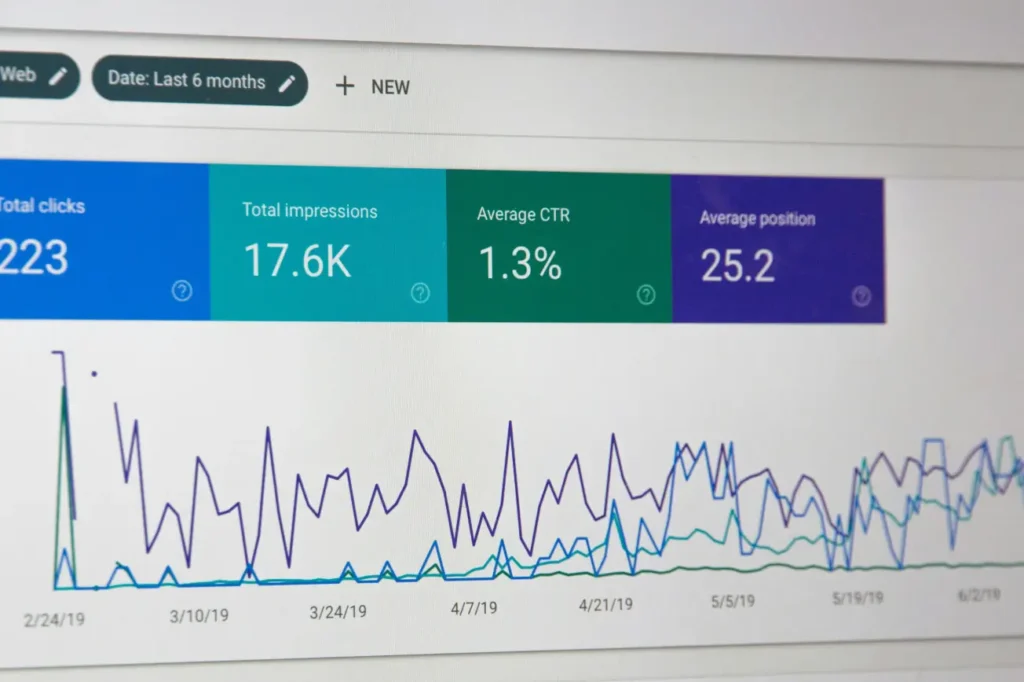
The digital planning process: 8-steps to success
Having a well-crafted digital strategy is critical for business success, but sometimes, thinking about this process can be overwhelming – especially if you don’t know where to start.
In this article, we examine the digital planning process to help you create a plan that aligns with your business objectives and resonates with your target audience. I hope this 8-step approach helps you in your business. Let us know if you have any questions—we are here to help.

Step 1: Define Objectives and KPIs
The first step in the digital planning process is to define your objectives and key performance indicators (KPIs). Ask yourself what you want to achieve and how you will measure your progress. Some examples of specific goals and KPIs could include increasing website traffic, improving conversion rates, or growing social media engagement. It’s also important to ensure that your objectives and KPIs are achievable. While it’s great to have ambitious goals, they should be realistic for your business and consider potential limitations or constraints.
To make sure your KPIs are bulletproof, remember to make them SMART: specific, measurable, achievable, relevant and time-bound.
Step 2: Conduct Research and Analysis
Once you have defined your objectives and KPIs, it’s time to conduct research and analysis to inform your digital strategy. This step involves analysing your competition, market trends, and target audience. Some tools and techniques that can be used for research and analysis include Google Analytics, surveys, focus groups, and competitor analysis tools. The output of this step consists of a better understanding of your competition, target audience, market trends, website performance, and opportunities and gaps in your digital strategy. By leveraging this information, you can develop a more effective and data-driven digital plan that delivers results for your business.

Step 3: Identify and Analyse Target Audiences
The next step is to identify and analyse your target audience. Understanding your target audience is critical to developing a digital strategy that resonates with them. Tools such as buyer personas and customer journey mapping can help you better understand your target audience.
One worthwhile exercise is developing buyer personas for your target audiences to help you create personalised and targeted content.
Step 4: Develop a Digital Customer Journey
The digital customer journey is the process customers go through when interacting with your brand online. Developing a digital customer journey involves mapping out each touchpoint that a customer may have with your brand, from awareness to purchase and beyond. The goal is to create a seamless experience for your customers that makes it easy for them to engage with your brand. You can then use this journey to develop specific messages for your content strategy.
Step 5: Develop a Content Strategy
Content is an essential component of any digital strategy. Developing a content strategy involves creating a plan for the types of content you will create, how often you will create it, and how you will distribute it. Your content strategy should align with your objectives and target audience and be informed by the digital customer journey.

Step 6: Develop a Multi-Channel Approach
Today’s consumers interact with brands across multiple channels, including social media, email, search engines, and more. A multi-channel approach involves developing a strategy for each channel to ensure that you are reaching your target audience where they are.
Step 7: Create a Digital Marketing Budget
Creating a digital marketing budget involves determining how much you are willing to spend on each component of your digital strategy. Your objectives should inform your budget and should be realistic for your business.

Step 8: Test, Measure, and Optimise
The final step in digital planning is testing, measuring, and optimising your digital plan. This involves regularly monitoring your KPIs, testing new strategies, and adjusting as needed. This step is critical to ensuring that your plan is constantly improving and delivering results for your business.
The digital planning process can be complex, but by following these steps, you can create a digital plan that aligns with your business objectives and resonates with your target audience. Regularly monitor your progress, test new strategies, and adjust as needed. By doing so, you can ensure that your digital plan continually improves and delivers results for your business.
If your business has already started its digital journey, but you feel there might be an opportunity or need for change or growth, check out our Digital Transformation services to see how we can help.
